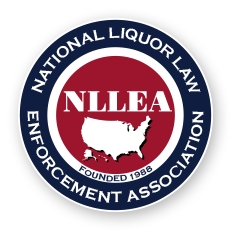

Licensed drinking establishments have long been recognized as high-risk locations for contributing to alcohol-related problems, including impaired driving. Among adults who self-report binge drinking, about 54 percent of all binge drinking episodes take place at a bar, club, or restaurant, compared to 36 percent in homes and 10 percent elsewhere1. A recent article by Graham, et. al.2, (2013) identified enforcing over service laws at on-premise licensed establishments as a key strategy for preventing alcohol-related tragedies. While almost all state alcohol law enforcement (ALE) agencies report conducting enforcement activities designed to prevent over service at licensed establishments3, these types of operations are usually done infrequently and without objective data to identify which establishments should receive focused law enforcement resources. Collecting Place of Last Drink (POLD) data has been suggested as one strategy that could be implemented to help target limited enforcement resources for over service operations.
In 2016, the NLLEA began working with Belay Software to create a national POLD system that may be used at the city, county, and state law enforcement level. The objective of this initiative is to create a more coordinated system of communication and information sharing and increased enforcement between local law enforcement and state alcohol law enforcement agencies, focused on preventing impaired driving and other alcohol-related crime through analysis and use of POLD data. The feedback and analyses that law enforcement agencies receive through the POLD system allows law enforcement agencies to track in close to real time potential problematic retail establishments that may be overserving alcohol.
Agencies who wish to participate in the NLLEA POLD system should contact the NLLEA at carrie.christofes@nllea.org for more information. NLLEA is interested in having as many law enforcement agencies across the nation participate in this initiative, and as such, the cost for using the POLD system is quite reasonable.
1 - Naimi TS, Nelson DE, and Brewer RD (2009). Driving after binge drinking. American Journal of Preventive Medicine, 37(4): 314–320.
2 - Graham K, Miller P, Chikritzhs T, Bellis MA, Clapp JD, Hughes K, Toomey TL, Well S (2013). Reducing intoxication among bar patrons: some lessons from prevention of drinking and driving. Addiction, 109: 693-698.
3 - Lenk KM, Toomey TL, Nelson TF, Jones-Webb R, Erickson DJ (2014). State and local law enforcement agency efforts to prevent sales to obviously intoxicate patrons. Journal of Community Health, 39: 339-348.
4 - National Transportation Safety Board (2012). Safety Recommendation H-12-34 through -36. November 21, 2012. Available online: http://www.ntsb.gov/safety/safety-recs/recletters/H-12-034-036.pdf.